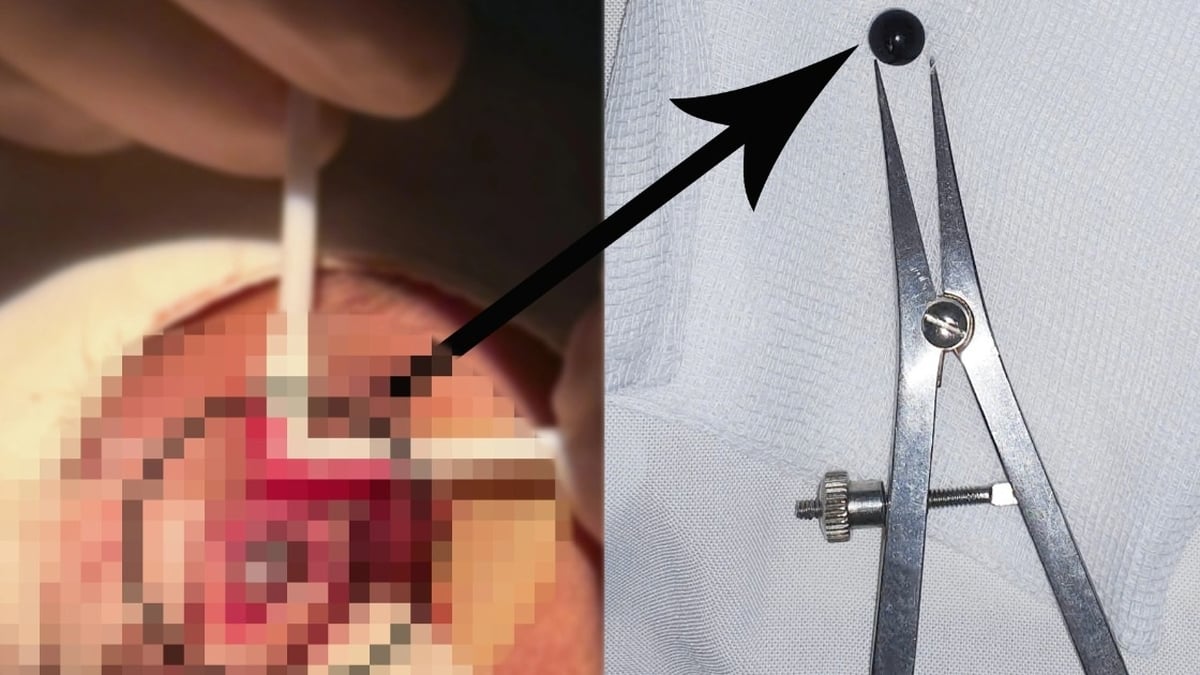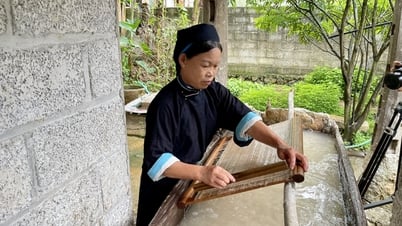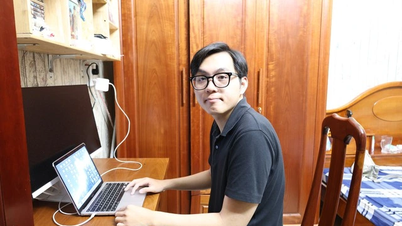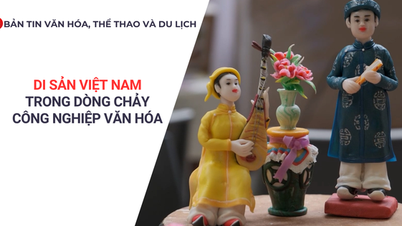
Pink eye (acute conjunctivitis) is a condition in which a membrane covers the front of the white of the eye and the back of the eyelid. The disease appears five to seven days after exposure to the source of infection, first with symptoms of red eyes, then swollen eyelids, watery eyes and discharge, sticky eyelids after waking up. The eyes feel gritty as if there is a foreign object, but there is no pain or blurred vision. This is an important point to distinguish from pink eye caused by other dangerous causes such as corneal ulcers, uveitis, glaucoma, etc.
Ophthalmologists say that pink eye usually lasts from one to two weeks, depending on the virulence of the agent and the body's reaction. During the course of the disease, it can cause severe symptoms such as pseudomembranes, corneal ulcers; the eyes are more swollen and painful, making it difficult to open the eyes, pink tears mixed with blood, when the eyelids are turned up, a thick white membrane will appear on the inside of the eyelids. If this membrane is left for a long time, it will become thick and hard, rubbing against the cornea (black eye), causing the cornea to be scratched or eroded widely, which can lead to corneal ulcers. In the remission stage (usually from five to seven days), inflammatory complications may appear on the cornea. This inflammation can appear in the epithelial or subepithelial layer, often lasting for a long time, or recurring, so patients should be monitored and treated.
Pink eye is often transmitted by direct contact through saliva droplets, or shaking hands, sharing towels, wash basins. The disease is also transmitted indirectly through intermediate contacts such as door handles, elevator buttons, swimming pool water... The causes of the disease are quite diverse, such as: viruses, bacteria, fungi, allergies... in which the main causes are Adenovirus, Coxsackievirus and Enterovirus with different rates and depending on the epidemiological area. Each type of virus has its own characteristics, such as Enterovirus can cause acute disease and severe progression, while Adenovirus often causes chronic keratitis... The disease often occurs when the seasons change, especially from summer to autumn and spreads strongly in the community into an epidemic. This year, the epidemic occurred right at the beginning of school season, causing the number of cases to increase even more.
In general, the disease is usually benign, rarely causing complications affecting vision but greatly affecting daily life, study and work. The disease will be cured after about 4-5 days, if detected and treated properly. However, if subjective, improper treatment, the disease can easily develop into complications such as inflammation, corneal ulcers, leading to more difficult treatment. Dr. Hoang Cuong, Head of Social Work Department (Central Eye Hospital) said that although there are no statistics, in reality there have been some cases of complications, so people should not be subjective when suffering from pink eye.
According to Dr. Dang Xuan Nguyen (Vietnam Ophthalmology Association), there are usually no specific drugs to treat pink eye, because the cause is often due to viruses that are not affected by antibiotics. However, doctors often prescribe medium-dose eye drops to prevent secondary infections because after a viral conjunctival infection, the conjunctiva's resistance is weakened, leading to easy bacterial infection. Corneal nutrition preparations are often used as artificial tears to help enhance the recovery ability of the eyeball's surface, reduce irritation and reduce uncomfortable symptoms in the eyes. Corticosteroid anti-inflammatory drugs can be considered to treat some specific cases of excessive inflammation. The use of these drugs must be prescribed by doctors and carefully monitored. Patients should absolutely not buy them for use on their own because the drugs can reduce the immunity of the conjunctiva, increase the risk of complications such as corneal ulcers, and prolong the progression of the disease...
In addition, when the eye has a pseudomembrane, it must be removed surgically, otherwise it will cause serious complications. This procedure must be performed in a sterile operating room to avoid secondary infection with other bacteria. In addition to the above treatments, patients need to pay attention to eye and body care to increase the effectiveness of treatment.
Regarding information circulating on social networks about the use of folk remedies to treat pink eye, ophthalmologists recommend not using such methods. For example, using betel leaves to steam the eyes, the betel leaves contain hot essential oils. After steaming, the patient will feel comfortable and less stuffy (mistakenly thinking that it has a healing effect), but then the eyes will become more swollen, the disease will become more severe, and can cause corneal burns, corneal ulcers, and more severe infections. Similarly, applying fish mint leaves or aloe vera to the eye area when having pink eye can easily cause secondary eye infections because fish mint and aloe vera are often not treated to ensure sterility... Therefore, people need to avoid unproven treatment methods because there have been many cases of severe complications that are difficult to restore vision...
The Ministry of Health has just issued a document requesting the Chairmen of the People's Committees of provinces and cities to direct the Department of Health to strengthen monitoring, early detection and timely handling of outbreaks of pink eye in the area; organize guidance on implementing anti-infection measures in kindergartens, schools, agencies, enterprises and the community. In addition to organizing good consultation and treatment, relevant units need to fully prepare so as not to lack medicines, supplies, chemicals and equipment for epidemic prevention; strengthen hospital infection control work in accordance with regulations of the Ministry of Health ; increase propaganda about pink eye so that people understand the causes, transmission routes and disease prevention measures in the community; implement disease prevention measures in schools...
Ophthalmologists recommend that to prevent infection, during the epidemic season, people should limit crowded places, wear masks and glasses when in contact with people with pink eye, regularly wash their hands with soap or alcohol-based hand sanitizer after contact with objects in public places such as doorknobs, stair handrails, public seats, public computers, etc., and wash their nose and throat daily with saline. Schools should organize cleaning of living, studying, and playing spaces with surface disinfectant solutions. Pink eye patients need to increase their awareness for the community to avoid infecting others.
Source








































































































Comment (0)